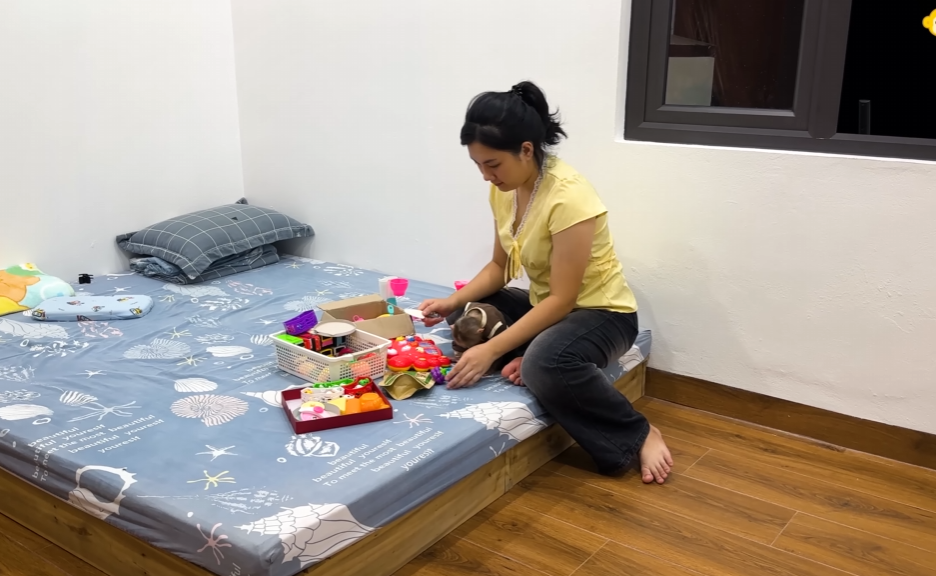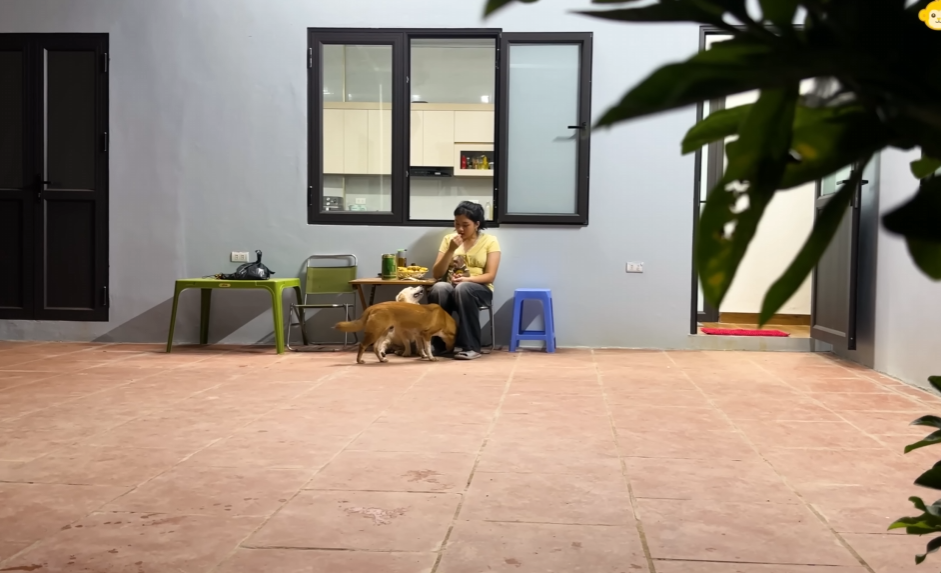





Lala, a lively little girl with sparkling eyes and endless curiosity, often spent her afternoons watching her parents. She loved observing the way they interacted—sometimes gently, sometimes playfully, and sometimes with a seriousness she didn’t yet fully understand. To her, Mom and Dad were the pillars of the home, always busy yet somehow always finding time to care for her. But one particular day, Lala would discover something that made her heart swell with wonder: Dad’s special feelings for Mom.
It was a bright Sunday morning. The sunlight spilled into the living room, painting the floor with golden stripes. Lala was curled up on the couch, clutching her stuffed rabbit while pretending to read a picture book. She wasn’t really focused on the pages; instead, her ears were tuned to the kitchen, where Dad was bustling about. Usually, it was Mom who cooked breakfast, but today Dad insisted on taking over.
Lala tilted her head curiously. “Why is Dad cooking? He usually burns the eggs!” she whispered to her stuffed rabbit. Sure enough, a loud sizzling sound came from the pan, followed by a muttered, “Oops, too much oil.” Lala giggled behind her hand.
Mom entered the kitchen, wearing her morning robe, her hair still loose from sleep. “What’s going on in here?” she asked, raising an eyebrow.
Dad turned around quickly, hiding something behind his back. “Nothing! Just… breakfast!” he said with a sheepish grin.
Lala’s eyes widened. Why was Dad hiding something?
When Mom tried to peek, Dad gently pushed her back toward the living room. “No, no, go sit down. Today is my turn to spoil you. Just wait!” His voice was playful but filled with a kind of warmth that made Lala blink in surprise.
She had never seen Dad act so… secretive.







After a while, Dad brought out two plates. On one, he had scrambled eggs shaped (not perfectly, but recognizably) into a heart. On the other plate, there were slices of toast arranged to spell out “LOVE.” Lala’s jaw dropped open.
Mom laughed, covering her mouth with her hand. “Oh my goodness, you did this?”
Dad placed the plates carefully on the table, rubbing the back of his neck. “It’s not much, but I just wanted to remind you… you mean a lot to me. Every day.”
Lala gasped loudly, unable to contain herself. “Daddy! You made heart eggs for Mommy?”
Both parents turned to look at her, and she realized she’d been caught spying. But instead of scolding her, Dad chuckled and patted the seat beside him. “Yes, Lala. Sometimes it’s good to show the people we love how special they are.”
Mom’s eyes softened as she looked at Dad, and then she looked at Lala. “Your dad is full of surprises.”
Lala couldn’t stop staring. She thought love was just hugs and kisses before bedtime, but now she realized there were other ways—silly heart-shaped eggs, careful gestures, secret smiles. It was like discovering a hidden treasure in her own home.
Later that day, the surprises didn’t end.
After breakfast, Dad pulled out a small box from the top shelf of the closet. Lala’s curiosity reached its peak. “What’s in there, Daddy?” she asked, bouncing up and down.
Dad winked. “A little something for your mom.”
He handed the box to Mom, who looked puzzled. Inside was a delicate bracelet with tiny charms shaped like stars. “I saw this last month,” Dad explained, “and it reminded me of you. You’re always shining for our family.”
Lala’s mouth fell open again. “Daddy, you bought Mommy jewelry? Like in the movies?”
Mom’s cheeks turned pink, and she gently took Dad’s hand. “You didn’t have to do this…”
“I wanted to,” Dad said simply.
Lala, still astonished, tugged at her rabbit’s ear. She had never realized how much thought Dad put into making Mom smile. To her, Dad was the one who carried heavy bags, fixed the squeaky door, or told her bedtime jokes. But now she saw another side of him—the side that quietly adored Mom in little ways







The day continued, and Lala noticed more and more tiny gestures.
When Mom was folding laundry, Dad sneaked behind her and tucked a flower into her hair. When they went for a walk, he offered his hand even though the path was smooth. And when Mom laughed at something silly, Dad looked at her as though her laughter was the most precious sound in the world.
Lala, walking between them, kept glancing up in amazement. “Daddy, do you always do this stuff for Mommy?”
Dad crouched down to her level. “Love is not just a feeling, Lala. It’s something you do. Every day. Even in small ways.”
Mom smiled warmly. “And one day, when you grow up, you’ll understand it even more.”
But Lala already felt like she understood a little. She suddenly wanted to do something too. That night, after dinner, she disappeared into her room with paper, crayons, and stickers. She worked very hard, sticking her tongue out in concentration as she drew.
Finally, she came running back to the living room, holding up a picture. It showed three stick figures—Mom, Dad, and herself—holding hands under a big red heart. Above it, she wrote in big letters: “LOVE FAMILY.”
“Look!” Lala said proudly. “This is my special feeling for you both!”
Dad picked her up, laughing, and kissed her forehead. “That’s beautiful, sweetheart.”
Mom hugged them both tightly, tears glimmering in her eyes. “This is the best gift of all.”





That night, as Lala lay in bed, she thought about everything she had seen. She whispered to her stuffed rabbit, “I didn’t know Dad loved Mom this much. He really, really loves her.”
And in that moment, Lala realized something important: love wasn’t just a word, or a story from a fairy tale. It was in the eggs shaped like hearts, the bracelet hidden in a box, the flower tucked in hair, and the way Dad looked at Mom like she was the most important person in the world.
Lala smiled, pulling her blanket up to her chin. She felt safe and happy, knowing her parents loved each other so much. And as she drifted off to sleep, she promised herself that she would always carry that lesson—showing love not just in words, but in actions, every single day.



